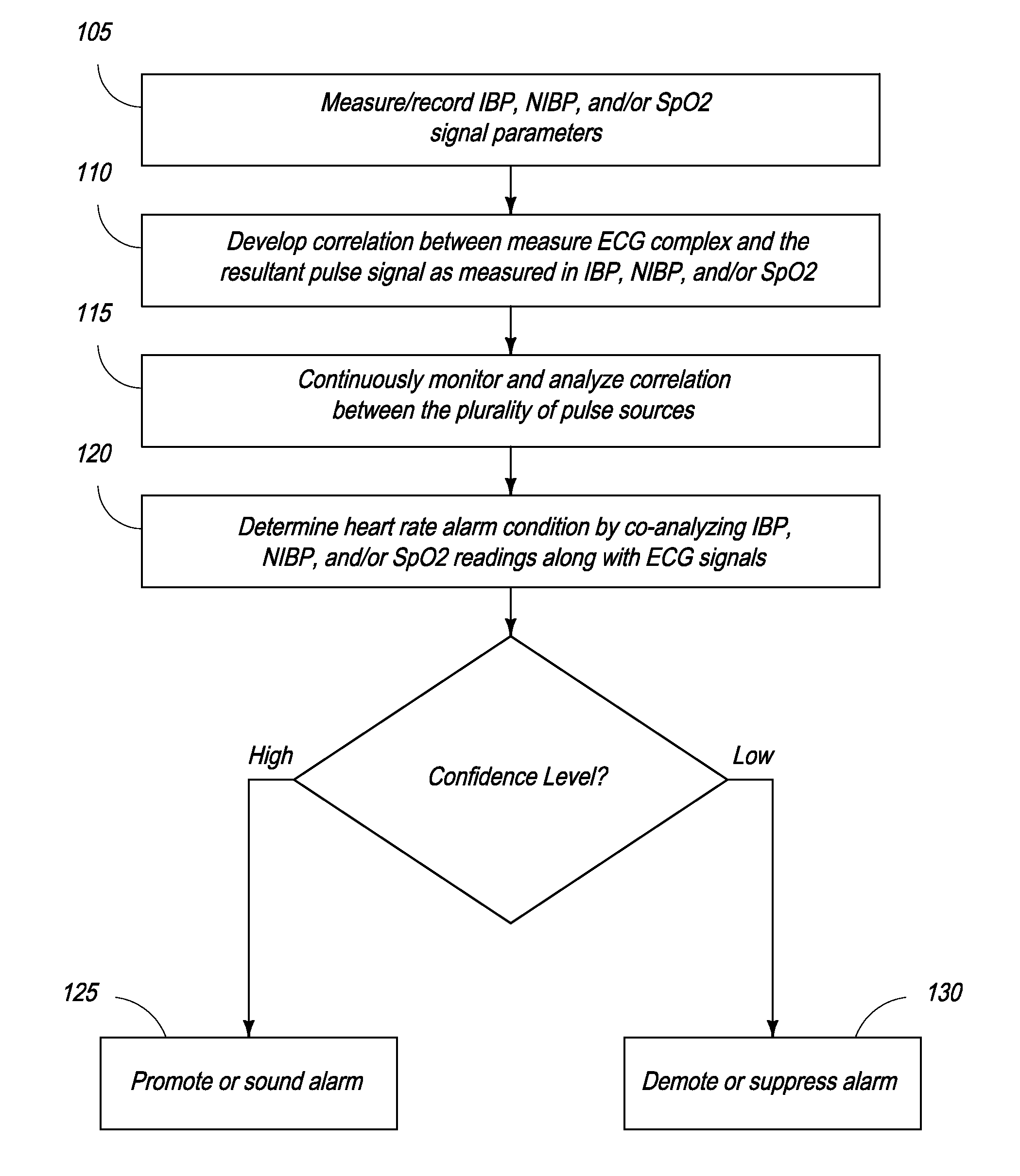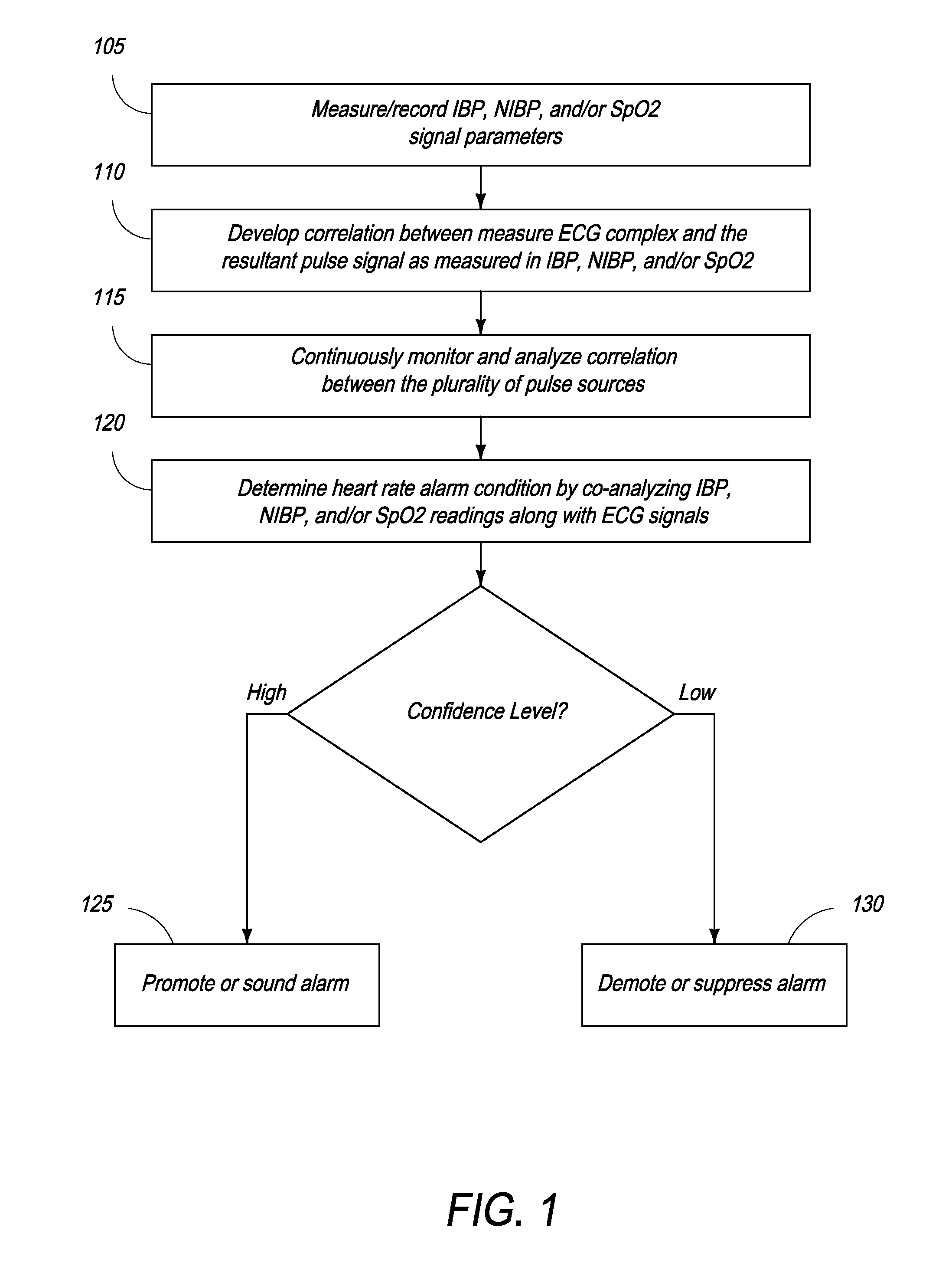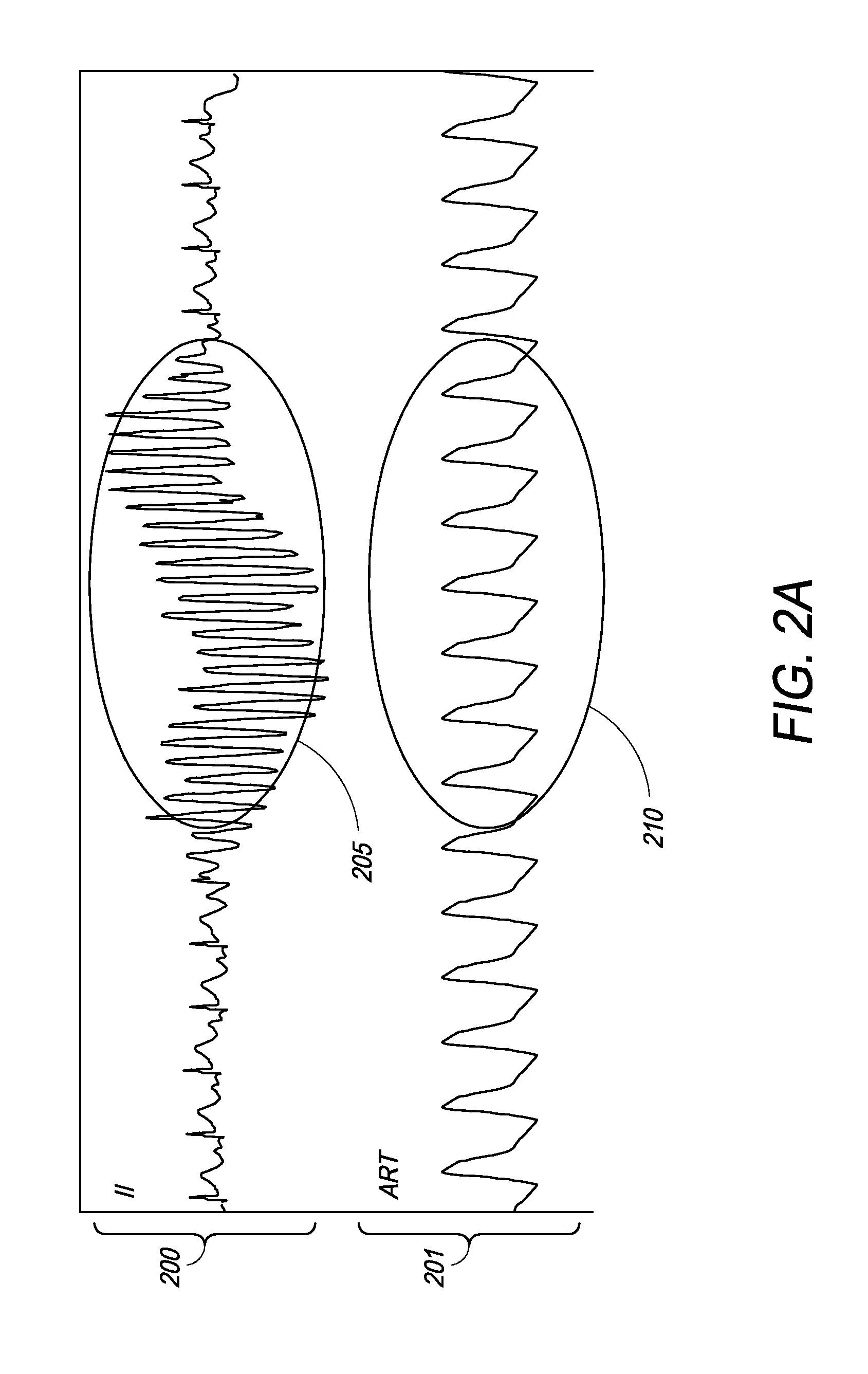Methods & systems to determine multi-parameter managed alarm hierarchy during patient monitoring
a multi-parameter, patient monitoring technology, applied in the field of patient monitoring systems, can solve the problems of caregiver apathy, unfavorable patient monitoring, and inability of the patient to experience an unacceptable number of alarms within the patient monitoring system, and achieve the effect of increasing the patient's respiration ra
- Summary
- Abstract
- Description
- Claims
- Application Information
AI Technical Summary
Benefits of technology
Problems solved by technology
Method used
Image
Examples
Embodiment Construction
[0024]In one embodiment, the present specification discloses a system and method for collectively analyzing a plurality of physiological parameters and using the results to promote, demote, or suppress alarm notification. The present specification provides the benefits of producing more specific patient alarms and reducing the occurrence of false alarms, thereby permitting the monitoring personnel to perform more effectively.
[0025]In one embodiment, ECG parameters are considered with any one, or a combination of, the following sensor measurements: Invasive Blood Pressure (IBP); Non-Invasive Blood Pressure (NIBP); and, Blood Oxygen Level (SpO2), such as via pulse oximetry. For each parameter there is a corresponding waveform signal that is created by measuring and sampling the signal off of a transducer.
[0026]For ECG, a waveform is derived from an electrical signal detected by cutaneously placed electrodes which respond to the propagation of electrical signals in heart muscles. In on...
PUM
 Login to View More
Login to View More Abstract
Description
Claims
Application Information
 Login to View More
Login to View More - R&D
- Intellectual Property
- Life Sciences
- Materials
- Tech Scout
- Unparalleled Data Quality
- Higher Quality Content
- 60% Fewer Hallucinations
Browse by: Latest US Patents, China's latest patents, Technical Efficacy Thesaurus, Application Domain, Technology Topic, Popular Technical Reports.
© 2025 PatSnap. All rights reserved.Legal|Privacy policy|Modern Slavery Act Transparency Statement|Sitemap|About US| Contact US: help@patsnap.com



